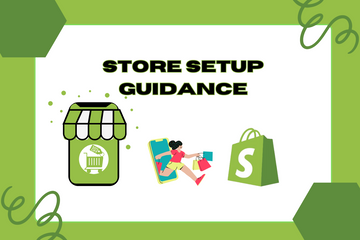We help you understand how to optimize the look and feel of your store to make it more visually appealing and highly functional, thereby enhancing your store traffic and ranking. We guide you on the apps and features for your homepage, product page, collection page, and cart page to ensure your store's success.
Why Optimize Your Store Setup?
Optimizing your store setup offers several benefits:
- Enhanced User Experience: A well-organized and visually appealing store improves the user experience, encouraging visitors to stay longer and explore more.
- Increased Traffic and Sales: Optimizing your store can lead to higher search engine rankings, increased traffic, and ultimately more sales.
- Improved Functionality: Integrating the right apps and features enhances the functionality of your store, making it easier for customers to navigate and make purchases.
Steps to Optimize Your Store Setup
Step 1: Enhance Your Homepage
- Use a Professional Theme: Choose a professional, responsive theme that aligns with your brand identity.
- Add a Dynamic Slider: Implement a dynamic slider to showcase featured products or promotions.
- Highlight Key Features: Use banners and sections to highlight key features, bestsellers, and new arrivals.
Step 2: Optimize Product Pages
- High-Quality Images: Use high-quality images with zoom functionality to give customers a detailed view of your products.
- Detailed Descriptions: Provide detailed product descriptions, including specifications, benefits, and usage instructions.
- Customer Reviews: Enable customer reviews to build trust and provide social proof.
Step 3: Improve Collection Pages
- Organized Layout: Use a clean and organized layout to display product collections.
- Filter Options: Implement filter options for size, color, price, and other attributes to help customers find products easily.
- Promotional Banners: Add banners to promote special offers or featured collections.
Step 4: Enhance the Cart Page
- Sticky Cart Icon: Add a sticky cart icon that stays visible as customers browse your store.
- Mini Cart: Implement a mini cart that displays cart details without redirecting to the cart page.
- Cart Drawer Pop-Up: Use a cart drawer pop-up that allows customers to view and edit their cart items quickly.
Step 5: Integrate Essential Apps
- SEO Optimization: Use apps like Plug in SEO or SEO Manager to optimize your store for search engines.
- Email Marketing: Integrate email marketing apps like Klaviyo or Omnisend to build and manage your email lists.
- Social Proof: Use apps like Loox or Judge.me to showcase customer reviews and ratings.
Step 6: Optimize for Speed and Performance
- Image Compression: Compress images to reduce load times.
- Minify Code: Minify CSS, JavaScript, and HTML to improve site speed.
- Enable Caching: Use caching solutions to speed up page load times.
Step 7: Monitor and Analyze Performance
- Analytics Tools: Use tools like Google Analytics to monitor traffic, user behavior, and conversion rates.
- Heatmaps: Implement heatmap tools like Hotjar to understand how customers interact with your store.
Conclusion
Optimizing your Shopify store setup with the right app integrations and page enhancements is crucial for creating a visually appealing and highly functional store. By following these steps, you can improve user experience, increase traffic, and boost sales, ensuring your store's success










